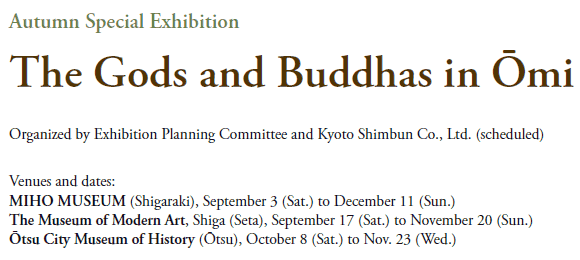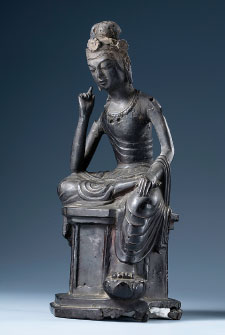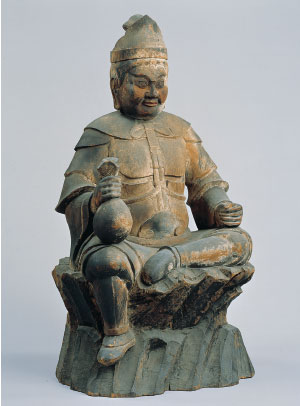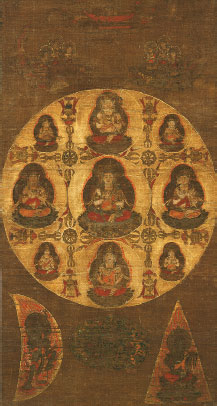
This exhibition is a collaboration with MIHO MUSEUM, The Museum of Modern Art, Shiga, and Ōtsu City Museum of History to explore the traditional religious culture of Ōmi from three vantage points. MIHO MUSEUM presents “The Path to Tendai Buddhism” highlighting Buddhist statues and paintings from Ōmi. The MIHO MUSEUM presentation explores the world view of the
Dual World Mandala (J., ryōkai mandara), which brings together the world of the buddhas and bodhisattvas developed through Mahāyanā Buddhism and the esoteric Buddhism introduced to Japan by the Shingon master Kūkai. The exhibition traces the process in which Tendai Buddhism was established in Japan by the priests Saichō (767–822), Ennin (794–864), and Enchin (814–891), who greatly influenced religion in the Ōmi area and Japan.

Miroku Bosatsu (Skt., Maitreya Bodhisattva)with One Leg Pendant
Japan, Nara period, 7th–8th century Hyakusai-ji Temple
Prefectural Important Cultural Property
Photographed by Kenji Yamazaki
Japan, Nara period, 7th–8th century Hyakusai-ji Temple
Prefectural Important Cultural Property
Photographed by Kenji Yamazaki

Daikokuten (Skt., Mahākāla) with One Leg Pendant
Japan, Heian period
Kongōrin-ji (Myōju-in) Temple
Important Cultural Property
Photographed by Shigeru Jyufuku
Japan, Heian period
Kongōrin-ji (Myōju-in) Temple
Important Cultural Property
Photographed by Shigeru Jyufuku

Sonshō Mandala
Japan, Kamakura period
Onjō-ji Temple
Important Cultural Property
Japan, Kamakura period
Onjō-ji Temple
Important Cultural Property